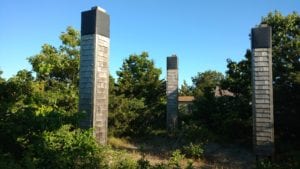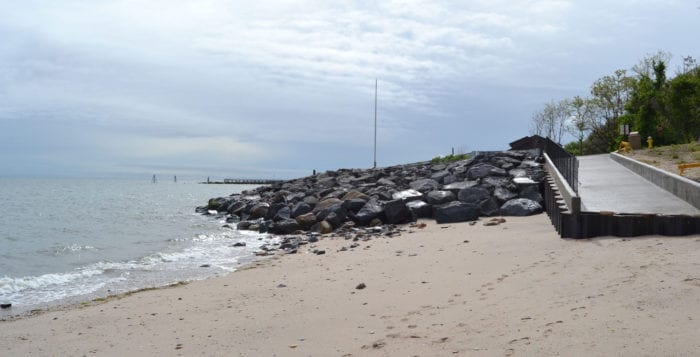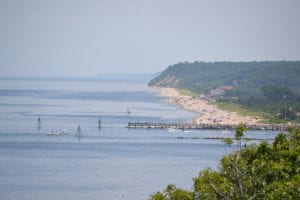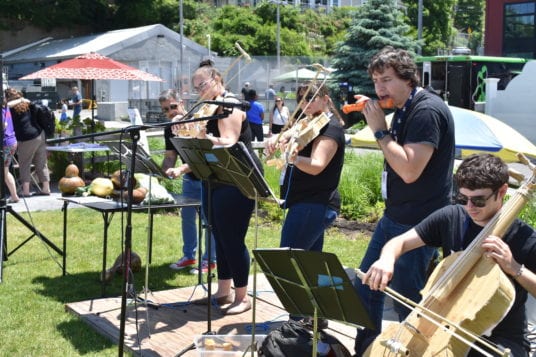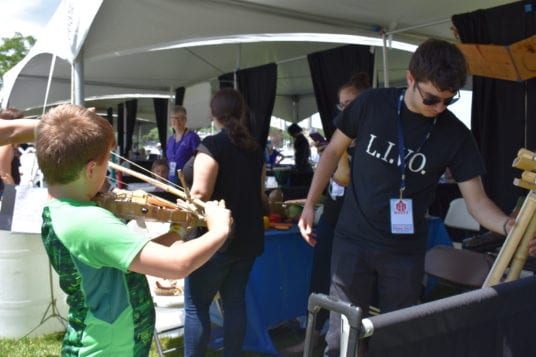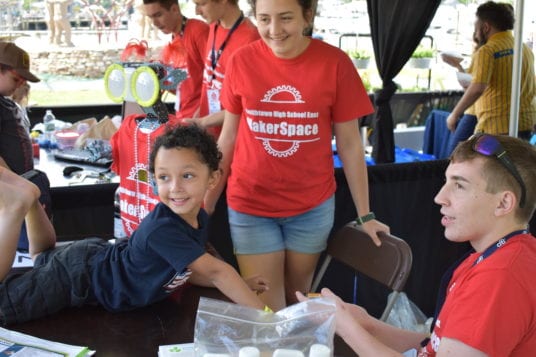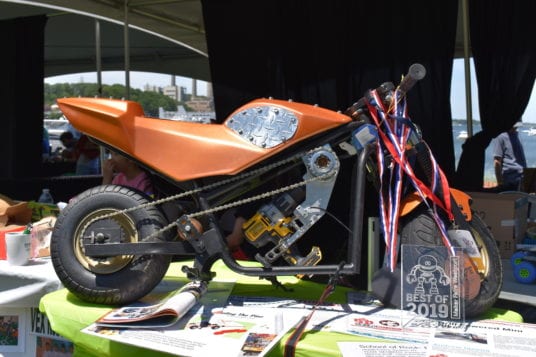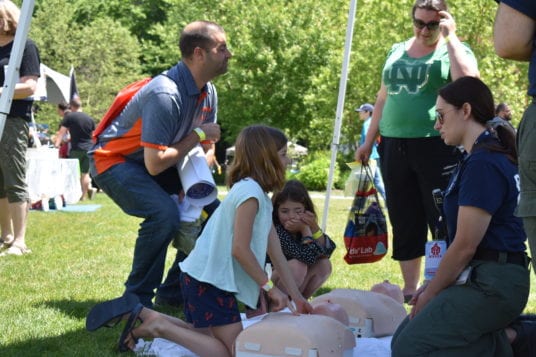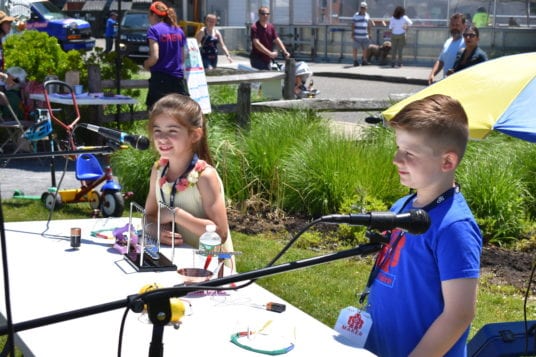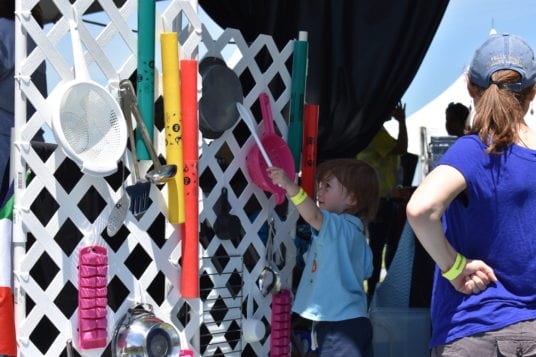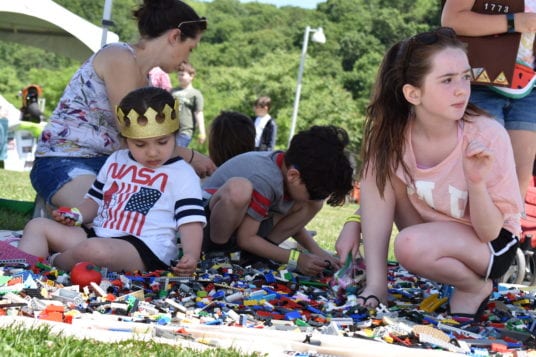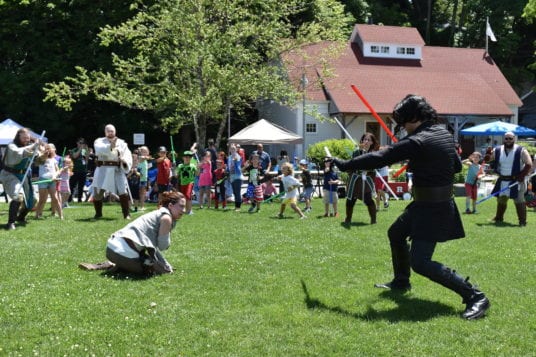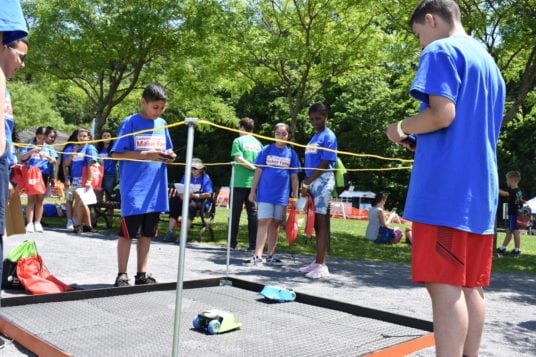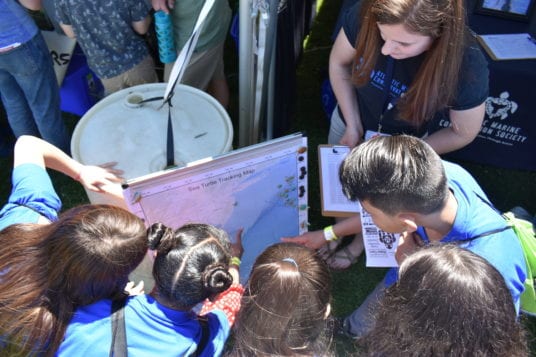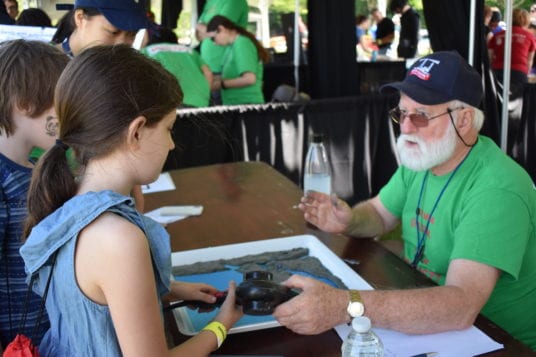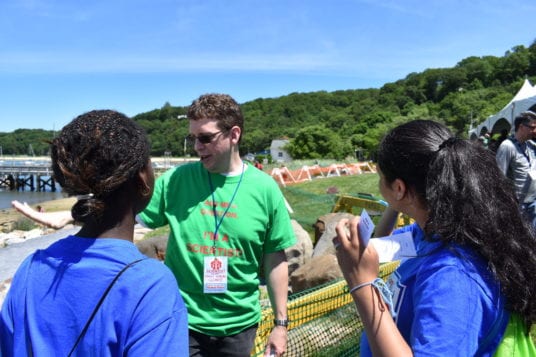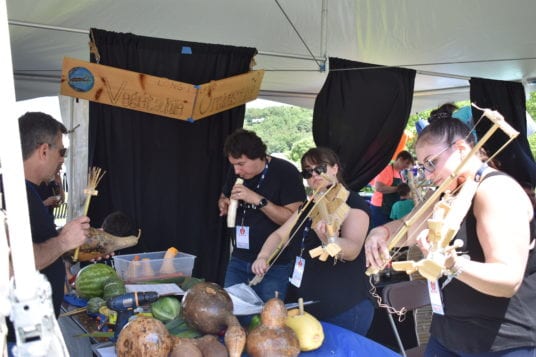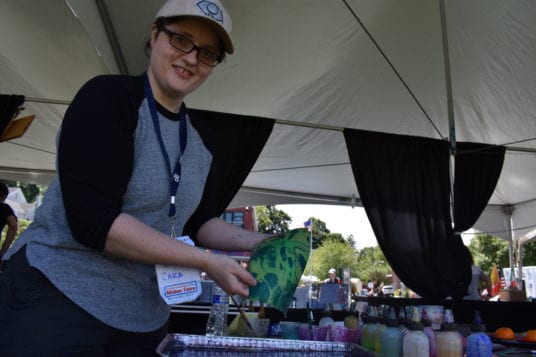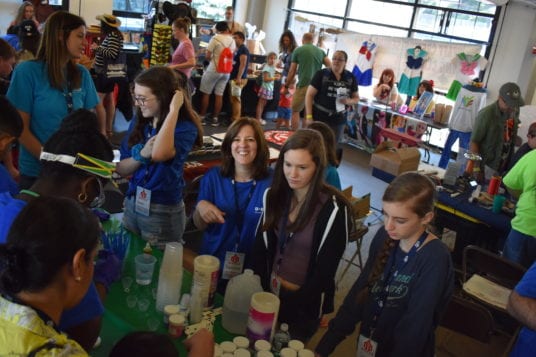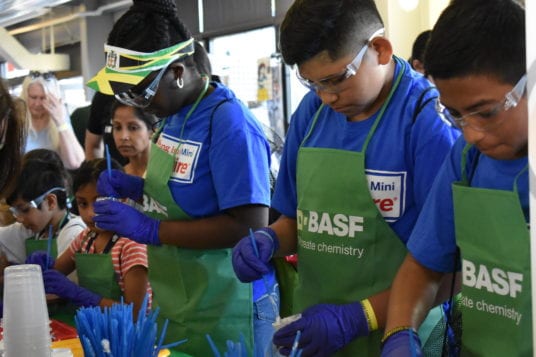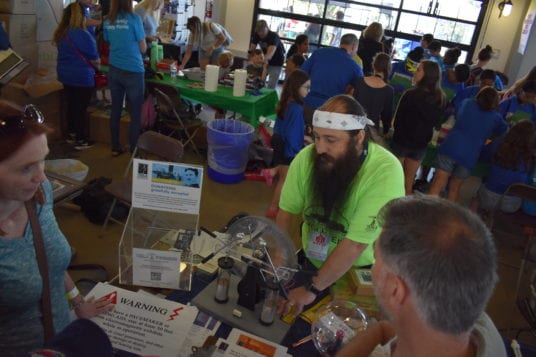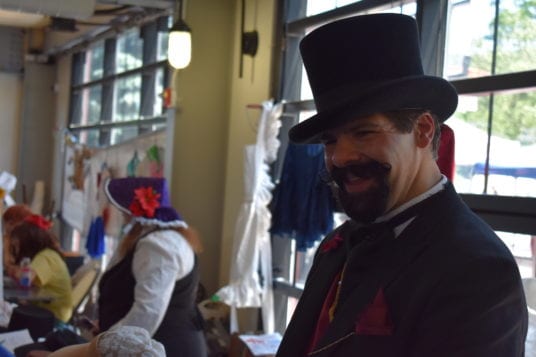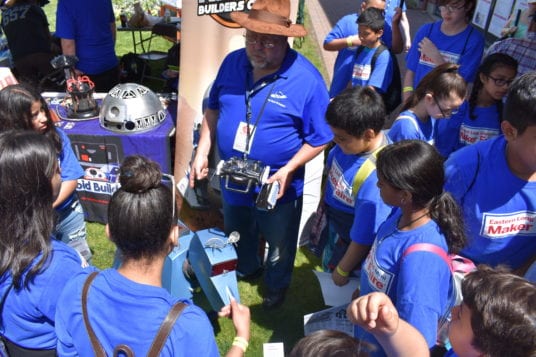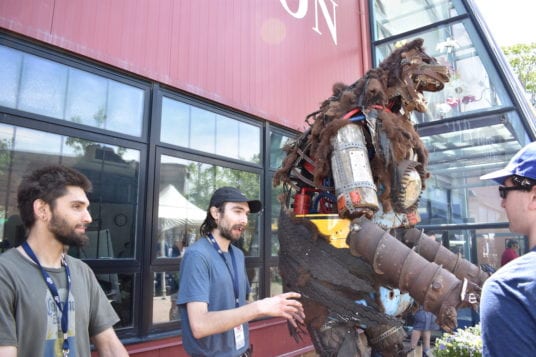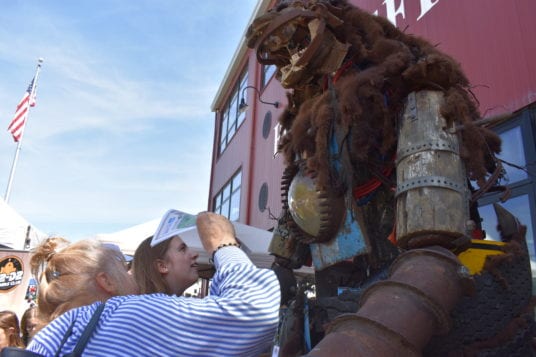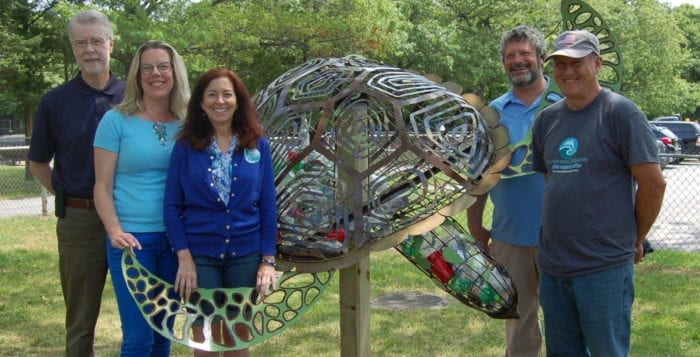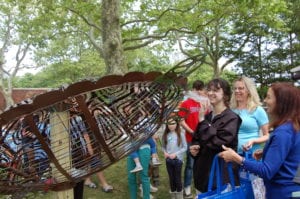When it came to their cesspool being replaced, one Three Village couple based their choice on their concern for local waterways.

Tom and Carolyn O’Dwyer decided to install a low-nitrogen septic system on their Strong’s Neck property this spring after learning about the treatment process. Unlike a cesspool where bacteria and nitrogen can seep out, and into local water sources, Tom O’Dwyer said in their new system water percolates through a septic system, and the advanced process removes more nitrogen than a cesspool. Excessive nitrogen can affect the oxygen level in water where it is below the necessary levels to support marine life.
“It’s good for the environment, and it’s good technology,” he said. “I do this stuff every day, so I figured I would lead by example.”
O’Dwyer, an environmental engineer, recently attended classes offered by the county to learn about the systems and the grants Suffolk has to offer to those who choose to install them.
As of July 1, Suffolk County residents who voluntarily decide to replace their cesspools will need to replace them with a system consisting of a septic tank and leaching pool at a minimum. Contractors will need to register the system with the Department of Health Services. While residents can choose a conventional septic system, another option is an advanced device that removes more nitrogen. County grants of up to $20,000 are available for residents who qualify, where the county has been offering the grants for the last two years. There is also an additional state grant of up to $10,000, which can mean a total of up to $30,000.
O’Dwyer said he and his wife bought their house four years ago, and while the cesspool hadn’t given them too many problems, after hearing about the low-nitrogen units, he thought it was the best way to go, especially with living 500 feet from the water, a part of their home they love.
“Our family enjoys swimming, boating, fishing and clamming in the local waterways, so clean water is very important to us,” he said.
“Our family enjoys swimming, boating, fishing and clamming in the local waterways, so clean water is very important to us.”
— Tom O’Dwyer
Involved with larger projects like past work on the Tappan Zee Bridge, he began hearing about low-nitrogen installation projects out East and decided to start learning about the systems and soon began designing them.
O’Dwyer said so far most of the work he has seen has been on the East End of Long Island, and he’s trying to get the word out to his friends about the grants and is currently working on three different homes on the North Shore where the homeowners are tired of their cesspool problems.
He said he found the process to apply for a grant from the county easy. He filled out an application and submitted a deed and tax forms. He said residents can then pick an engineer to design the system and pick a contractor off the list of county-approved contractors. Suffolk then directly pays the contractor.
The engineer said a site can be difficult at times due to certain ground conditions, and homeowners may have to pay more than the average of nearly $20,000. Field testing may be required to see if the ground is clay or sand and how well the soil will drain. As for engineers, the price averages around $2,500.
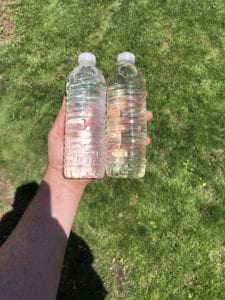
Peter Scully, deputy county executive for administration, said Suffolk County sanitary code requires that the low-nitrogen systems treat down to at least 19 milligrams per liter of total nitrogen, and it’s the most stringent requirement in the northeast. He said while the total nitrogen from cesspool discharge is said to be around 65 milligrams per liter, “the health department staff routinely see samples with concentrations of total nitrogen far in excess of 65 mg/l and in excess of 100 mg/l.” He added that conventional septic systems discharge 61 mg of nitrogen per liter, and the low-nitrogen systems create a 70 percent reduction when compared to cesspools.
George Hoffman, co-founder of the Setauket Harbor Task Force, calls those who upgrade to low-nitrogen septic systems “harbor heroes” because, he said, they care enough about water quality to do the right thing.
“It’s good to hear that homeowners in our area are installing low-nitrogen septic systems and are having a positive experience and setting an example for their neighbors,” he said. “This is especially important on Strong’s Neck where the transit time for groundwater to Setauket Harbor and Conscience Bay is less than two years.”
Suffolk County Legislator Kara Hahn (D-Setauket), a proponent of the bill, said the code was updated to match what was passed in 1972 for new residential construction where conventional septic systems with a leeching pool needed to be installed.
“They knew way back — almost 50 years ago — they knew the cesspool itself was not enough,” she said. “It’s essentially a hole in the ground.”
Hahn said studies of subwatersheds in the county, where more than 70 percent of structures are not hooked up to sewer systems, have shown quite a bit of nitrogen from residential waste.
She said while the low-nitrogen septic systems are not yet mandated like the conventional septic systems, it’s possible as early as next year that they could be for new home construction.
“They knew way back — almost 50 years ago — they knew the cesspool itself was not enough.”
— Kara Hahn
Hahn said the commitment of the county executive, legislators and county staff members has included working with the wastewater industry to find ways homeowners can switch over to the new system, how to install and to know exactly what the systems do.
“It’s been a tremendous accomplishment to get where we’re at,” she said.
She said many residents might save money with the low-nitrogen systems if faced with replacing a cesspool or at least break even instead of choosing a conventional septic system. She did say there is a small electric charge based on the system annually and a little more maintenance that residents should be aware of when choosing the system.
As for the grants, it must be the applicant’s primary residence occupied year-round. Most residents who have applied have qualified, Hahn said.
Last week O’Dwyer sampled his new system, and he said the effluent looked clear with no odor. The field samples also showed reduced nitrogen levels. The environmental engineer said he and his wife are happy they installed the system, and now through his business, he plans to help others do the same.
“My whole career I was searching for something,” he said. “I was passionate about a lot of things, but this intertwines my passion and my hobbies with my education and engineering background, so it’s a nice match.”
Interested residents can call Suffolk County Department of Health Services, 631-852-5811, for more information.

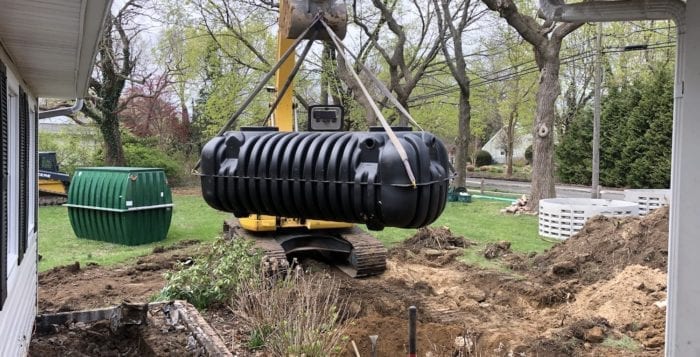
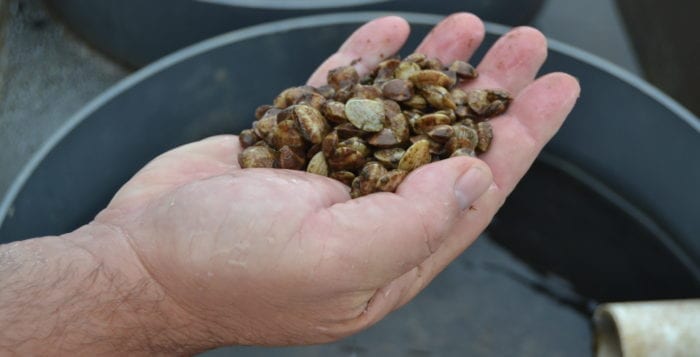
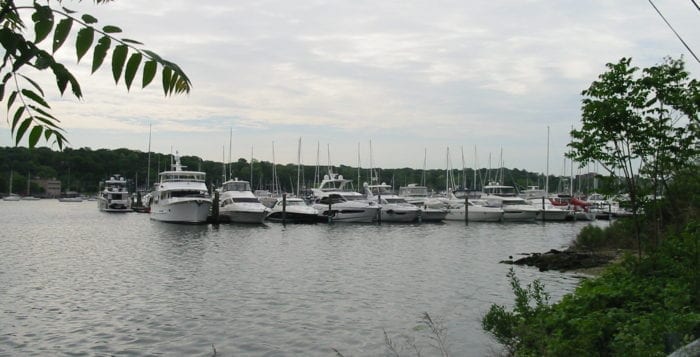
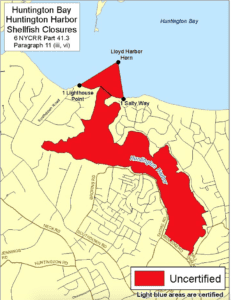
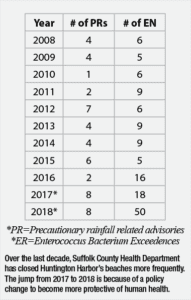 Christopher Gobler, the chair of Coastal Ecology and Conservation at Stony Brook University’s School of Marine and Atmospheric Sciences, is a co-chair for the project. He said he knows of no good information about the shellfish population trends for Huntington Harbor over time that might indicate whether or not shellfish are overharvested. One trend is clear: Huntington Harbor’s water quality needs improving. Gobler said his team identified five ecosystems that would most benefit from additional filtration, and Huntington ranks among the chosen few.
Christopher Gobler, the chair of Coastal Ecology and Conservation at Stony Brook University’s School of Marine and Atmospheric Sciences, is a co-chair for the project. He said he knows of no good information about the shellfish population trends for Huntington Harbor over time that might indicate whether or not shellfish are overharvested. One trend is clear: Huntington Harbor’s water quality needs improving. Gobler said his team identified five ecosystems that would most benefit from additional filtration, and Huntington ranks among the chosen few. 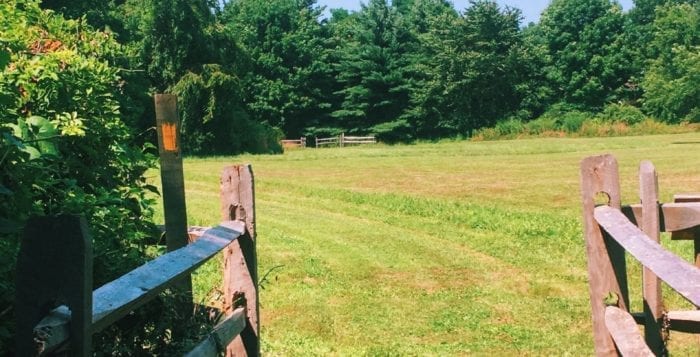

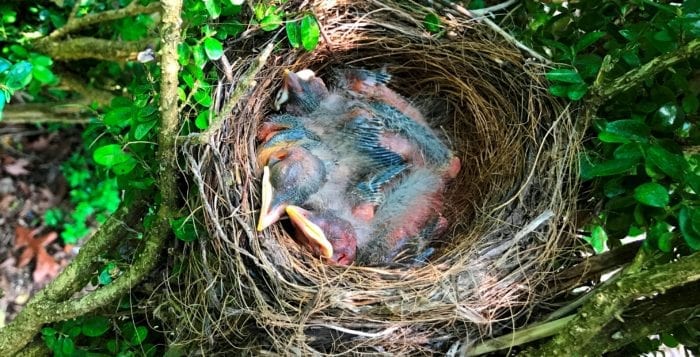
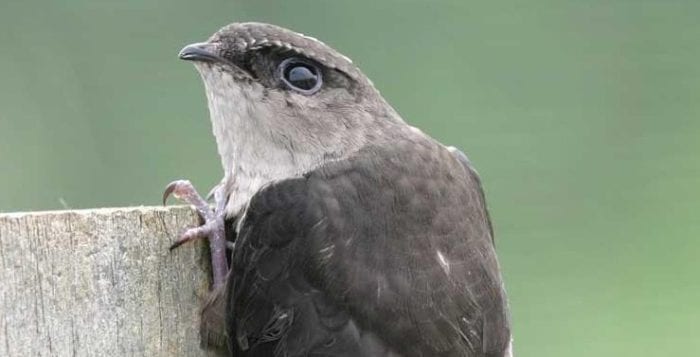
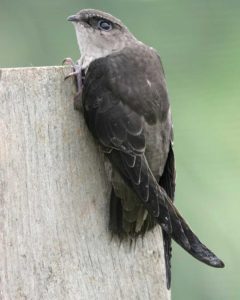
 Occasionally swifts break from their typical fluttery flights to display courtship behavior. During these displays a mated pair flies together, about a foot or two apart, and synchronously throw their wings into a deep V-shaped position and glide for a second or two before resuming regular flight. It’s a little joy to behold and life is worth living due to little joys, right?
Occasionally swifts break from their typical fluttery flights to display courtship behavior. During these displays a mated pair flies together, about a foot or two apart, and synchronously throw their wings into a deep V-shaped position and glide for a second or two before resuming regular flight. It’s a little joy to behold and life is worth living due to little joys, right?